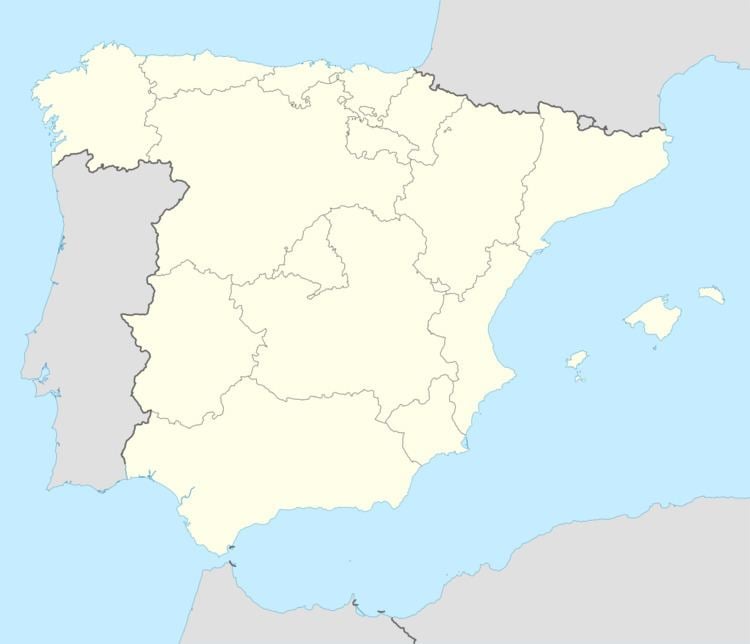Phone +34 902 82 02 82 | ||
 | ||
Address Prao el Colla, s/n, 39553 Celis, Cantabria, Spain Similar Cabarceno Natural Park, Cave of Altamira, Alto Campoo, National Museum and Rese, Picos de Europa | ||
Cueva el soplao cantabria spain el tren
El Soplao (Cantabrian: El Soplau) is a cave located in the municipalities of Rionansa, Valdáliga and Herrerías in Cantabria, Spain. It is considered unique for the quality and quantity of geological formations (speleothems) in its 17 miles length, 6 of which are open to the public. In it are formations such as helíctites (eccentric stalactites defying gravity) and curtains (draperies, or sheets of calcite, sometimes translucent, hanging from the ceiling). Its formation dates back to the Mesozoic, in particular the Cretaceous period 240 million years ago. The entrance is at 540 metres in the Sierra Soplao Arnero.
Contents
- Cueva el soplao cantabria spain el tren
- Cantabria el soplao cuevas gruta el soplao cave spain turismo cantabria speleology
- Situation
- Galleries
- Gallery of the Ghosts
- Gallery Gorda
- Gallery of the False Floor
- Gallery of the Camp
- Gallery of the Cauliflower
- Gallery of the Forest
- Gallery Genesis
- Other galleries
- Mineral and fossils
- Fossils
- References
The cave was accidentally discovered during drilling for mining, subsequently being exploited for the extraction of minerals. During its operation, many local families were supported by the income they got from the mining, combined with farming livestock. After decades of neglect, speleology, and in particular the Cantabria University Speleology Club since 1975, have discovered its true geological value.
On July 1, 2005 the Government of Cantabria opened it to the public and publicised it internationally, after development for tourism and protection rules prohibiting any further activity by the discoverering club. Research goes on, resulting in the study of amber deposits, the recognition of underground stromatolites formed by manganese-oxidising bacteria, and a new mineral form, zaccagnaite-3R.
The cave recently started holding music concerts. Artists like Bertín Osborne or Nando Agüeros have played inside the cave for hundreds of people in 2016.
El Soplao is just one of at least 6,500 underground caves in Cantabria.
Cantabria el soplao cuevas gruta el soplao cave spain turismo cantabria speleology
Situation
The cave is located in the Sierra de Arnero, part of the Sierra del Escudo de Cabuérniga, between the towns of Rionansa, Herrerías and Valdáliga and around San Vicente de la Barquera. The Sierra de Arnero runs parallel to the Cantabrian Sea, with a maximum altitude of 682 metres.
To access the cave you can use the Cantabrian motorway.
Galleries
El Soplao is a very extensive network of caves and developed at several levels. Cave metrics (December 2003) are: http://www.microbemagazine.org/index.php/05-2011-current-topics/3353-manganese-oxidizing-microbes-form-giant-stromatolites-in-caves
Gallery of the Ghosts
It is a natural room which had the amount of thick white and stalagmite formations rising from the ground pisolithic for her figure, gave rise to the name of the gallery. The gallery is 350 metres long and some areas reaching 35 metres wide. Its name comes from the great white stalagmites that resemble ghosts, in the end zones of the gallery. Had a great use to the early twentieth century as a place of extraction and storage by the mineral miners of La Florida.
Gallery Gorda
It is a room with a natural underground lake and one of the largest in terms of volume. This is the first gallery to be accessed Soplao. The name comes from the impression of smallness due to one of the cavers who investigated the caves. It has a lighting system that highlights the colours of the stalactite from the ceiling, covered with calcite helictitas.
Gallery of the False Floor
Small chamber where impressive rock formations in the form of thin threads that are screwed everywhere.
Gallery of the Camp
Is of moderate dimensions, with widths up to 10 metres. The name comes from the installation of a research camp during the first raids. Here it remained unbroken 208 hours Speleo Club members Cantabria highlight the cast, dyed red and white minerals in the area.
Gallery of the Cauliflower
Stand, rather than stalactites, stalagmites huge, often eccentric, that they tend to join at the end with the roof. Can be seen traces of an earthquake that hit the spot.
Gallery of the Forest
High gallery which takes its name from its resemblance to a natural forest. The cast and the union of stalactites and stalagmites happen everywhere, creating large and varied columns. As in the Galería of the Cauliflower can be seen traces of an earthquake.
Gallery Genesis
Located to the east. It is one of the highest, reaching 30 metres high. Its length exceeds 160 metres. Notable cast sheets, giant stalagmites pisolithic nests. Its name comes from the number of colours displayed on it, because of the variety of salts dissolved in water.
Other galleries
Mineral and fossils
This is the list of minerals and fossils found in the cave, in alphabetical order:
